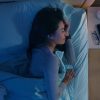Medical professionals have found that ultra-violet and blue light rays aggravate macular degeneration.
Ultra-violet and blue light rays are in a portion of the light spectrum of invisible light. These rays are below 286nm to 400nm and are harmful to the eye. Overexposure can lead to cataracts and other eye diseases, such as macular degeneration.
Types of UV Light
There are several different sources of UV light, such as the sun, fluorescent lighting, video display terminals, high-intensity mercury vapor lamps (used for high-crime areas and night sports), a welder’s flash and xenon arc lamps.
There are three different types of UV lights:
- UVC (below 286nm) – Most of this is filtered through the earth’s ozone.
- UVB (286-320nm) – Solar energy that causes snow blindness and sunburns and is absorbed by the cornea.
- UVA (320-400nm) – A portion of the invisible spectrum that is a source of concern for healthcare professionals. It is the most damaging form of UV radiation, transmitting to the crystalline lens of the eye.
Melatonin is a Natural Protectant
Researchers have identified the hormone melatonin, which is present in our skin, eyes and hair, as a UV and blue light absorber. It’s essentially a form of natural protection produced by the body. However, people are living longer, and as we age, our levels of melatonin gradually decrease. In fact, by the time we reach age 65, nearly half of our melatonin production is gone. This means that humans have a higher susceptibility to developing eye diseases, such as macular degeneration.
Who Needs Protection
Anyone who works outside needs adequate protection from both UV and blue rays. This can include construction workers, truck drivers, farmers, skiers, beachgoers, lifeguards, sports participants and even spectators.
People that spend hours in front of electronic devices or sit in rooms with fluorescent lighting are also susceptible to blue light overexposure.
One category of people that many overlooks are those taking medications. As Baby Boomers age and their health declines, many of them are taking medications that are classified as photosensitizing drugs. This can include diuretics, tranquilizers, antibiotics, anti-hypertensive drugs and anti-diabetic medications. Additionally, our youth needs to be concerned because oral contraceptives can also cause sensitivity to light.
Arm Yourself with Protection
To help reduce exposure to harmful blue rays, consider investing in a pair of BluTech lenses. These lenses are proven to help filter out these harmful rays and protect your eyes.
Find BluTech Near You



